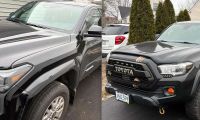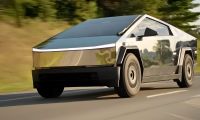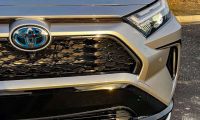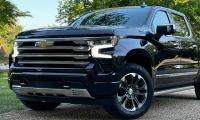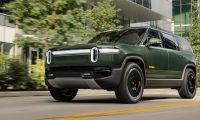This 23 second video from IIHS shows the Model Y being put through the paces in a series of crash tests. The video starts with a rollover test in which the Model Y does quite well. The Model Y also does well in the frontal crash test where the vehicle drives forward into a wall. In the frontal crash test, the hood containing the front trunk got damaged, but the driver’s side door remained almost completely intact.
Three things that make Tesla's safer. 1. Low center of gravity. 2. No engine in front trunk. 3. FSD.
-#Tesla #Teslasafety #TeslaReliability #Model3 #ModelY @elonmusk @Tesla @teslaownersSV @teslatidbits @SawyerMerritt @WholeMarsBlog @ray4tesla @ICannot_Enough @jpr007 #IIHS pic.twitter.com/yqISPBphxy— Torque News (@torquenewsauto) April 26, 2021
Model Y vs. UX 200
The Tesla Model Y was shown doing a crash test side by side with a Lexus UX 200. Both these vehicles are major players in the compact SUV segment. The two cars are shown crashing into a barrier sideways. It appears from the video that the Model Y might have sustained more windshield damage, but the Model Y does do better in the most important category here which is keeping the driver protected. The driver’s side door on the UX 200 got pushed inward more so than the Model Y due to the impact of the crash.
Reasons why Tesla’s fare better in accidents
The tweet above from Torque News outlines three important reasons which are listed below as to why Teslas hold up well in crashes.
Reason #1 - Low center of gravity
Teslas are built with a very low center of gravity. Tesla’s largest vehicle is the Model X. The Model X has a curb weight of approximately 5,200 pounds. This means that the Model X weighs more than a Ford Explorer, but not that much less than a Chevy Tahoe. Both the Explorer and the Tahoe have a higher center of gravity than the Model X. It was surprising to learn the Model X weighed so much because it doesn't look that big.
It is an amazing feat that Tesla can make cars that are quite heavy by most standards yet are so fast going 0-60.
Reason #2 - No engine in front trunk
Most cars have the engine in the front, and the engine will often be destroyed in a crash. Tesla’s battery is kept hidden away. This makes it so the battery is less likely to go to waste in an accident.
Reason #3 - Tesla’s FSD in a crash
Tesla’s FSD system has helped avoid a large number of collisions. This hasn’t prevented the outcry against FSD after every accident. There is a lot of work to be done as to how FSD could avoid different types of crashes. A good strategy would be to just configure FSD to respond to the most common types of crashes that occur due to human error.
The most common type of accident is a rear end collision. The software would learn through experience. Tesla could do many more real-world accident simulations, and then go back to the drawing board to program FSD to respond accordingly.
The Cybertruck
The Cybertruck was just recently in the news due to the fact steel prices have been increasing for a while now. Potential buyers are curious as to whether these higher steel prices will raise the price of the Cybertruck. Another thing to be curious about is how the Cybertruck will do in crash testing.
The Cybertruck is expected to be a very safe vehicle, and this is partly because the Cybertruck has a very unorthodox yet strong steel build. The Cybertruck has a very low center of gravity as it does not look like a traditional pickup.
Image:Tesla
Daniel Cappo reports Tesla developments at Torque News. He has had a passion for cars ever since age five when his grandparents let him drive their old golf cart around their property in Upstate NY. He has attended numerous auto shows, and even got the chance to drive a Ferrari California on the track. Ever since Tesla opened up a dealership at his local mall, he's been an avid follower of their cars and technology. Dan has a B.S. in Public Communication from U Vermont. Follow Daniel on Twitter and LinkedIn for daily Tesla News.








